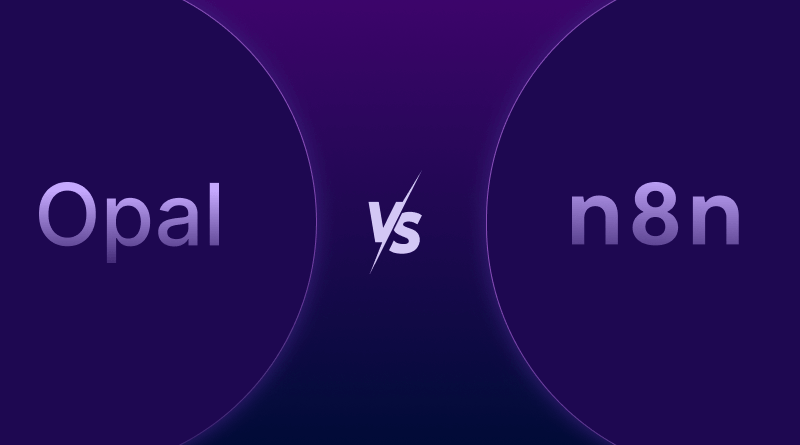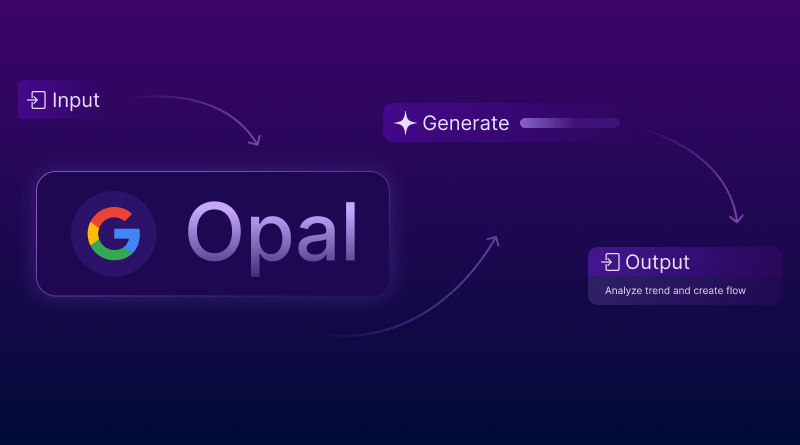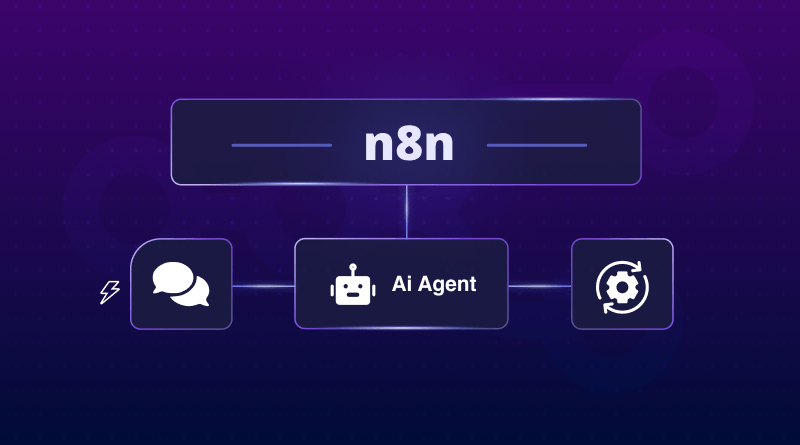
In Opal vs n8n, two automation tools for different parts of the system are compared. Google Opal is an AI-powered no-code app builder that allows users to create simple AI workflows using natural language.
n8n
is an open-source, self-hosted automation platform built on Node.js for advanced and customized workflows.
Opal is designed for creators who want prototype ideas, while n8n is for developers who need total control, connectivity, and data privacy. Automation platforms for different tasks. Both are used to automate work, but they are designed for other users, and their requirements vary significantly.
Who is best, Google Opal or n8n?
It’s not about which is “better,” it’s about which one you actually need. Are you looking just to prototype an idea with AI, or build a complex, scalable workflow that connects your entire tech stack?
As cloud and automation experts at BigCloudy, we’re here to give you the honest answer. Let’s break down the real differences.
What is Google Opal? (And what is the use of Opal?)
Think of Google Opal as a creative sandbox for building simple AI applications. It’s Google’s new, experimental tool that lets you turn a simple idea into a functional mini-app using plain English.
The core concept behind the
Google Opal
app builder is simplicity. You describe what you want, and Opal’s AI builds a simple workflow for you.
The Main Uses of Google Opal are:
- Rapid Prototyping: Quickly build and test a proof-of-concept for an AI-powered tool (e.g., “an app that summarizes customer feedback”).
- Simple, AI-First Tasks: It’s designed to leverage Google’s AI models for tasks like text generation, summarization, and simple data manipulation.
- Non-Technical Users: It’s perfect for marketers, project managers, or anyone in the Google Workspace ecosystem who wants to experiment with AI without writing a single line of code.
It’s new, it’s exciting, and it’s built to lower the barrier to creating AI tools.
What is n8n? (And what is the use of n8n?)
Now, let’s talk about n8n (short for “nodemation”). This is a powerful, open-source workflow automation platform. If Google Opal is a sandbox, n8n is the complete construction site with heavy machinery.
The core concept behind n8n is power, flexibility, and control. It uses a visual, node-based editor where you connect different applications and services to create complex, multi-step workflows.
The main use of n8n is for:
- Production-Grade Automation: It’s built to run and scale mission-critical business processes (e.g., “when a new customer signs up, add them to the CRM, send a welcome email, create an invoice in Stripe, and notify the sales team on Slack”).
- Deep Integrations: n8n connects to over 400 different applications (and any app with an API), giving you endless possibilities.
- Data Control & Self-Hosting: This is a big one. Because n8n is open-source, you can self-host it on your own servers with one of BigCloudy’s VPS plans. This gives you 100% control over your data, a critical factor for compliance and security.
Google Opal vs n8n: A Head-to-Head Comparison
Let’s put them side-by-side to see where they shine.
1. Ease of Use & Workflow Design
- Google Opal: Wins for absolute beginners. If you know how to use Google Opal, you know how to talk. You use natural language prompts to build your app. It’s conversational and abstracts away all the complexity.
- n8n: Requires some technical understanding. Its visual “node” editor is powerful, but you need to understand how APIs, data, and logic (like IF/ELSE branches and loops) work. It has a learning curve, but it unlocks incredible power.
2. Power & Workflow Complexity
- Google Opal: Designed for simple, linear workflows, primarily focused on AI tasks. It is not built to handle complex business logic, custom error handling, or multi-part processes.
- n8n: This is n8n’s home turf. It excels at complex, multi-step workflows. You can build in custom JavaScript, create conditional branches, and manage sophisticated processes that run across your entire company.
3. Hosting, Control & Pricing
- Google Opal: It’s a fully managed Google product. This is easy (no setup!), but it means your data runs on Google’s servers, and its future (and pricing) is tied to Google’s product strategy, as it’s still in beta.
- n8n: This is the clear winner for control. You have two options: a paid cloud version or a free, open-source self-hosted version. Self-hosting is the game-changer for many businesses, offering maximum security, privacy, and cost-effectiveness.
| Feature | Google Opal | n8n |
|---|---|---|
| Type | AI no-code app builder | Open-source automation tool |
| Best For | Beginners, creators | Developers, tech teams |
| Ease of Use | Very easy · No coding | Needs technical skills |
| Hosting | Google Cloud | Self-hosted or VPS |
| Integrations | Google Workspace | 400+ apps & APIs |
| Data Control | Google-managed | Full control · Self-host |
| Pricing | Free (beta) | Free (open-source) |
| Verdict | Best for simple AI ideas | Best for scalable automation |
The Verdict: Who is Best, Google Opal or n8n?
As you can see, they aren’t really competitors. They are different tools for different jobs.
You should choose Google Opal if:
- You are a non-technical user or marketer.
- You live inside the Google Workspace (Gmail, Sheets, Docs).
- Your primary goal is to prototype an AI idea quickly.
- You need a simple, no-code Google Opal app builder for a personal or small team task.
You should choose n8n if:
- You are a developer, IT professional, or technical user.
- You need to build complex, reliable, and scalable automations for your business.
- You require full control over your data and prefer a self-hosted solution.
- You need to connect to a wide variety of apps (CRMs, databases, marketing tools, etc.) that aren’t just in the Google ecosystem.
Can Google Opal and n8n Work Together?
Absolutely! This is where things get really interesting. You could use Opal as a simple, AI-powered “front-end” (like an idea-generation tool for your marketing team) and then have Opal send that data to n8n via a webhook.
From there, n8n takes over as the “back-end” engine, running the heavy-lifting automation: enriching the data, adding it to your CRM, and triggering your entire business process.
Final Thoughts
Google Opal and n8n are both powerful automation tools, but they serve different users. Google Opal is an AI-powered app builder made for non-technical users who want to create quick, no-code workflows and prototypes. n8n, on the other hand, is an open-source, self-hosted automation platform designed for developers who need flexibility, integrations, and full data control.
In short, Google Opal is best for simple AI ideas, while n8n is best for advanced, scalable automation.
At BigCloudy, we help users host and scale n8n workflows securely with high-performance VPS solutions built for automation and development.
FAQs
Google Opal is built for beginners using plain English. n8n is a powerful platform for technical users who need custom code and logic.
n8n is open-source and completely free to self-host. Google Opal is a beta product, and its pricing is tied to Google Cloud services.
You can only self-host n8n, which gives you 100% data control. Google Opal is a managed product that runs on Google’s servers.
They are for different jobs. Opal is for simple AI ideas; n8n is for complex execution. They work together well: use Opal as a front-end and n8n as the backend via a webhook.





